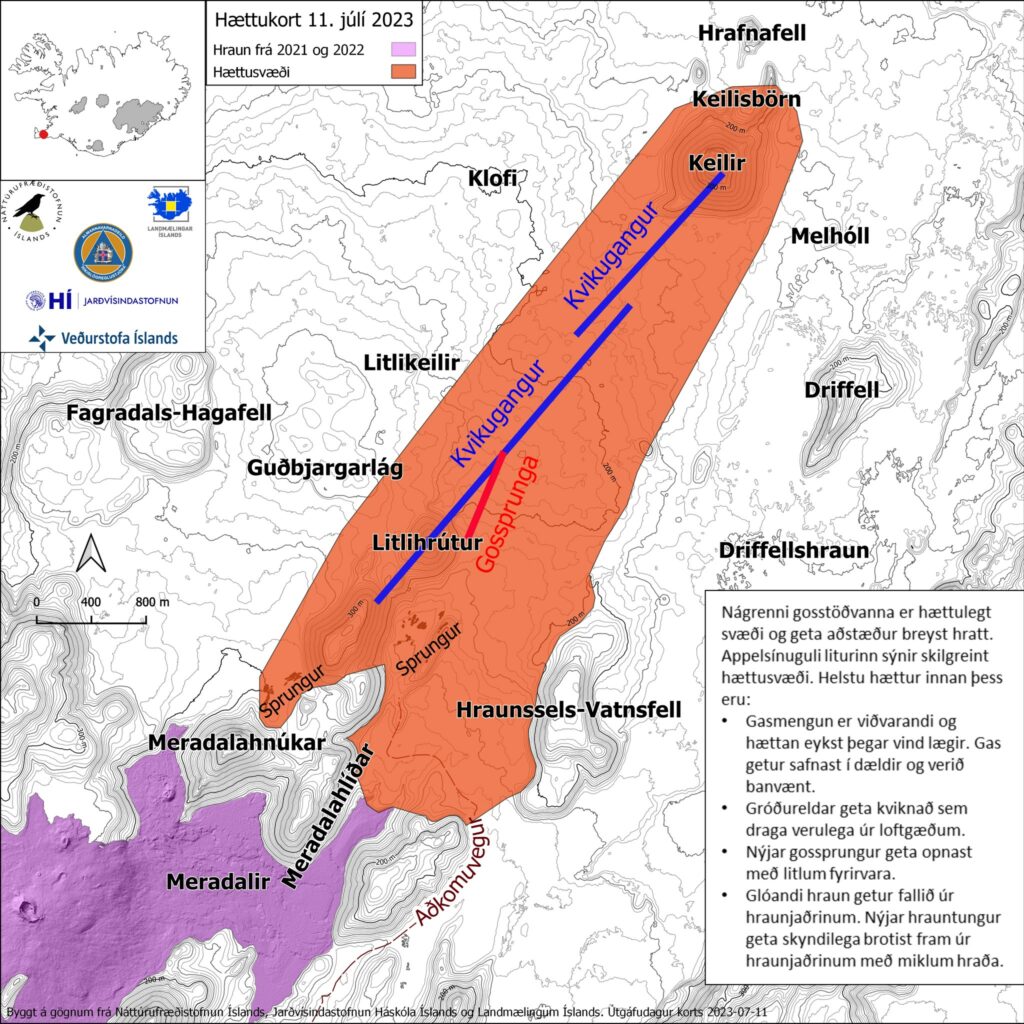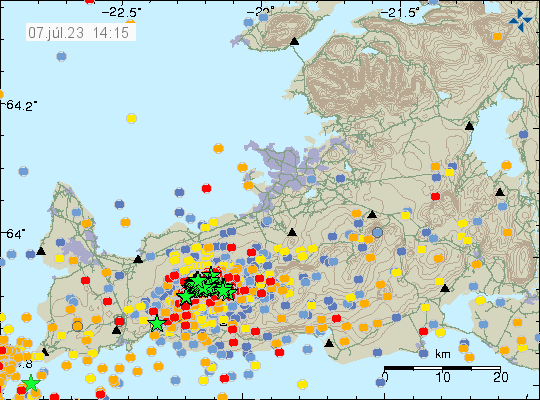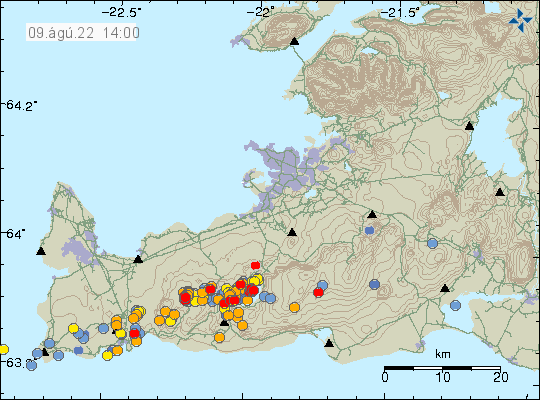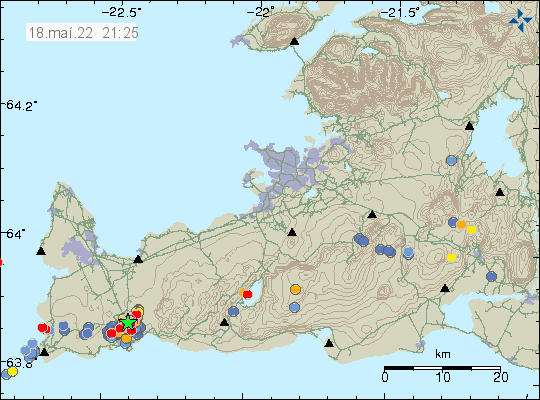This article is short. The eruption is mostly stable at the writing of this article but the situation can change quickly without warning.
- The eruption has changed in last few hours. It seems to be in only one crater that is slowly forming. The eruption has stopped at the north most end of the eruption fissure. At the writing of this article.
- The dyke now extends 1 km under Keilir mountain in the direction of north-east. This might be a new dyke intrusion and not connected to the dyke that started the current eruption. This might result in a second eruption soon, but its too early to know for sure at the writing of this article.
- The eruption started large fires in the moss and other plants in this area around Litli-Hrútur. This has resulted in massive toxic smoke in this area.
- There’s a high risk of the volcano gas from the eruption, along with the toxic smoke from all the plants and moss burning.
- Interestingly, while earthquake activity has dropped it has not stopped. Why that has happened is a bit of a mystery, it might be connected to the possible new dyke that has formed under Keilir mountain.
- Yesterday (10. July 2023) the longest the fissure extent was at 1500 meters or 1,5 km. Since then it has gone down to one erupting crater that seems to be 50 meters to 100 meters long.

It is impossible to know how long this eruption is going to last. Since dyke intrusions are poor magma containers this eruption might be a short one if there isn’t a constant supply of fresh magma from the deep mantle. Its too early to know if that is the case here. I have also noticed that once the eruption ends in any area, that area is not going to erupt again. When the eruption ends, it ends forever and that makes this a single eruption activity or crater rows. This area might be Monogenetic volcanic field (Wikipedia).
Since this type of eruptions are mostly uneventful and just continue. I plan on only posting updates when there are some news or changes to the eruption happen.
Update at 17:41 UTC
ISOR is reporting that their station called FAF (Fagradalsfjall) has to be moved because the lava is flowing directly at it. They are going to find a new location for this station. This report can be seen here on Facebook in Icelandic.





